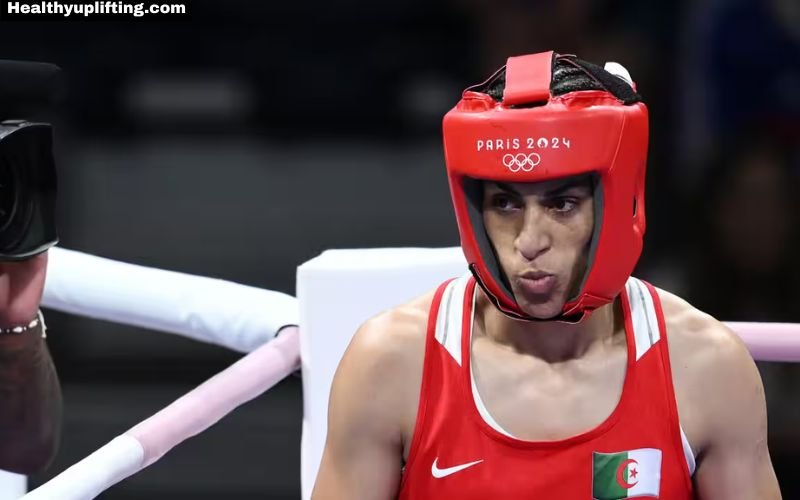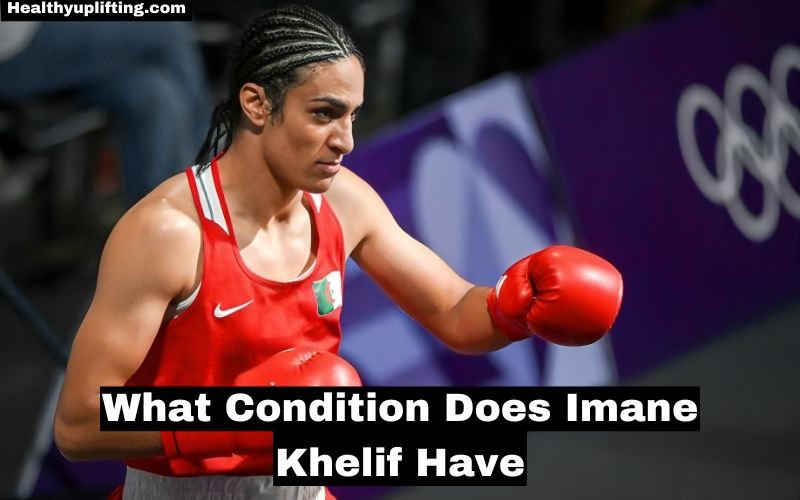Imane Khelif is an Algerian boxer who has achieved international fame and recognition in women’s boxing. Her rise to prominence has not only made her a symbol of success in Algeria but has also earned her respect across the global boxing community. However, with fame and visibility, there often comes speculation about athletes’ health, particularly regarding whether they are managing any physical or mental conditions that could affect their performance. In this article, we will delve deep into Khelif’s career, the common physical and mental health challenges that athletes like her face, and whether there is any confirmed information about her dealing with a specific condition.
Imane Khelif: A Brief Overview of Her Career
Born on March 7, 1999, in Tiaret, Algeria, Imane Khelif started boxing at a young age in a country where women’s participation in combat sports is not as prevalent as in some other parts of the world. From the beginning, she demonstrated extraordinary discipline, focus, and talent, which quickly set her apart from her peers. With limited resources and opportunities for female athletes in Algeria, Khelif’s journey to the top has been marked by hard work, determination, and a desire to break gender barriers.
Her big break came when she started competing in international competitions, where her skill and tenacity were recognized by the global boxing community. Khelif competes in the lightweight category, a division known for its intense speed and power, and she has been a dominant force within it. She has represented Algeria in numerous high-profile tournaments, including the African Championships and the Olympic Games.
Khelif’s success has helped bring attention to women’s boxing in Algeria and has made her a source of inspiration for many young girls across the country. She has proven that, despite the challenges faced by women in combat sports, excellence can be achieved through dedication and resilience.
The Physical Toll of Boxing: Common Injuries and Health Challenges

Boxing is one of the most physically demanding sports in the world. The combination of strength, agility, endurance, and technique required to excel in the ring places incredible pressure on the body. As a result, boxers often experience a range of injuries and long-term health conditions throughout their careers. Although there is no verified public information about Imane Khelif having a specific medical condition, understanding the common health challenges faced by boxers can shed light on the potential issues she may encounter.
1. Head Trauma and Concussions
One of the most serious risks in boxing is head trauma, which can lead to concussions and other forms of brain injury. Repeated blows to the head can cause significant damage, with both immediate and long-term effects. Symptoms of concussions include headaches, dizziness, confusion, and memory problems. For boxers, the risk of chronic traumatic encephalopathy (CTE), a degenerative brain disease, is also a concern, particularly if they suffer repeated head injuries over their careers.
While there is no public indication that Khelif has experienced severe head trauma, it is a reality that many boxers, including some of the sport’s greatest athletes, have faced. Protecting oneself from concussions and understanding the signs of brain injury are essential for all professional fighters.
2. Injuries to the Hands and Wrists
Boxers rely heavily on their hands, and injuries to this part of the body are extremely common. Fractures, sprains, and ligament damage in the hands and wrists are frequent occurrences, especially when the force of a punch is not properly absorbed. Boxers wear gloves and hand wraps to protect their hands, but the intensity of the sport means that injuries are inevitable.
If a boxer sustains a hand injury, it can take weeks or even months to fully heal, depending on the severity. During this time, rehabilitation is crucial to ensure that the hand recovers its strength and flexibility. For athletes like Khelif, whose livelihood depends on their ability to punch with speed and power, hand injuries can be a significant setback.
3. Shoulder and Rotator Cuff Injuries
The shoulder joint is particularly vulnerable in boxing due to the repetitive motion of throwing punches. Rotator cuff injuries, dislocations, and strains are common in boxers who put excessive stress on their shoulders. Injuries of this nature can be debilitating, often requiring physical therapy and sometimes surgery to repair.
Boxers who experience shoulder injuries often need to take extended breaks from the sport to allow their bodies to heal fully. During this time, they must engage in targeted rehabilitation exercises to restore strength and range of motion in the affected shoulder. These injuries can have long-lasting effects on a fighter’s career, especially if they are not properly treated.
4. Knee and Ankle Injuries
While boxing is primarily focused on the upper body, the lower body plays a critical role in a fighter’s ability to move quickly and maintain balance. Knee and ankle injuries, including sprains, ligament tears, and fractures, can occur during training or competition, especially if a fighter makes a sudden, awkward movement.
These types of injuries can be particularly frustrating for athletes, as they may limit mobility and agility, two key components of success in boxing. Rehabilitation for knee and ankle injuries often involves a combination of rest, physical therapy, and strength training to rebuild stability in the affected joint.
5. Chronic Pain and Inflammation
Over time, the repeated strain of boxing can lead to chronic pain and inflammation in the joints and muscles. Many boxers deal with chronic conditions like arthritis or tendinitis, which can significantly affect their quality of life. Managing these conditions requires a combination of medical treatment, physical therapy, and lifestyle adjustments, such as modifying training routines to reduce strain on the affected areas.
Mental Health Challenges in Boxing
In addition to the physical toll, boxing can also have a significant impact on an athlete’s mental health. The pressure to perform, the fear of injury, and the intense focus required to succeed at the highest level can lead to mental health issues like anxiety, depression, and burnout. These issues are common among athletes in many sports, but the high-stakes, high-intensity nature of boxing can make them particularly pronounced for fighters like Imane Khelif.
1. Performance Anxiety
For athletes like Khelif, who represent their country on the global stage, the pressure to perform at an elite level can be immense. Performance anxiety is a common mental health issue in sports, characterized by feelings of nervousness, fear, and self-doubt before competitions. This anxiety can affect an athlete’s ability to focus and execute their game plan, leading to suboptimal performance in the ring.
2. Depression and Isolation
Athletes who spend long periods away from home and family, traveling for competitions or training camps, can experience feelings of isolation. The mental toll of living a life dedicated to constant competition and rigorous training can lead to depression, especially if an athlete is dealing with a losing streak or a serious injury. The fear of failure or a career-ending injury can exacerbate these feelings.
For female athletes, such as Khelif, who face additional gender-based challenges in their sport, these feelings of isolation may be even more pronounced. Women in boxing often have fewer opportunities to compete, less media coverage, and less financial support than their male counterparts. These disparities can contribute to feelings of being overlooked or undervalued.
3. Burnout
The intense training schedules that athletes maintain can lead to burnout, a state of physical and mental exhaustion caused by prolonged stress. Burnout can affect athletes’ motivation, focus, and passion for the sport. In extreme cases, burnout can lead athletes to retire from competition earlier than expected.
Gender Disparities in Boxing: Khelif’s Role in Breaking Barriers
Imane Khelif’s success is even more impressive when viewed through the lens of the gender disparities that still exist in the world of boxing. Women’s boxing has historically been overshadowed by men’s boxing, with female fighters receiving less media coverage, fewer sponsorship opportunities, and lower financial compensation. Despite these challenges, Khelif has managed to rise through the ranks and establish herself as one of Algeria’s top athletes.
1. The Fight for Equality in Combat Sports
Female boxers have been fighting for recognition and equality for decades. The inclusion of women’s boxing in the 2012 Olympic Games was a significant milestone, helping to increase visibility and legitimacy for female fighters. Since then, more opportunities have emerged for women in boxing, but gender disparities remain.
Women like Khelif face additional challenges, particularly in countries where societal norms discourage women from participating in combat sports. Overcoming these obstacles requires not only physical strength and skill but also immense mental fortitude and determination.
2. The Cultural Challenges of Being a Female Boxer in Algeria
In Algeria, cultural attitudes toward women in combat sports can be conservative, making it difficult for female athletes to gain the support and resources they need to succeed. Despite these challenges, Khelif has managed to excel, becoming a role model for young women in her country who aspire to pursue careers in sports.
By breaking down barriers and challenging societal expectations, Khelif is helping to pave the way for future generations of female boxers in Algeria and around the world.
Injury Management and Longevity in Boxing
In a sport as physically demanding as boxing, managing injuries and maintaining long-term health are critical to an athlete’s success and longevity. Professional fighters like Imane Khelif must prioritize injury prevention, proper rehabilitation, and self-care to ensure they can continue performing at the highest level.
1. Physical Therapy and Recovery
After sustaining an injury, boxers must undergo extensive physical therapy to regain strength, flexibility, and mobility in the affected area. This can involve a combination of exercises, massage therapy, and stretching routines designed to promote healing and prevent further injury.
For athletes like Khelif, who rely on their physical abilities to compete, staying on top of injury management is essential to maintaining a long and successful career.
2. Diet and Nutrition
Nutrition plays a critical role in an athlete’s overall health and recovery. Boxers must follow strict diets that provide them with the necessary nutrients to support muscle growth, repair, and energy levels. A well-balanced diet is essential for maintaining peak performance and preventing injuries caused by fatigue or overtraining.
3. Mental Health Support
As mentioned earlier, mental health is a crucial aspect of an athlete’s well-being. Many elite athletes work with sports psychologists or mental health counselors to help them manage the mental and emotional demands of competition. For boxers like Khelif, mental health support can be key to staying focused, motivated, and resilient in the face of adversity.
See Also: What Autoimmune Disease Does Megyn Kelly Have?
Conclusion
While there is no confirmed information about Imane Khelif having a specific health condition, it is clear that her career as a professional boxer exposes her to a range of physical and mental health challenges. From the risk of injury to the mental toll of constant competition, Khelif faces the same hurdles that all elite athletes must navigate.
Despite these challenges, Khelif has continued to rise through the ranks of international boxing, becoming a symbol of resilience, strength, and determination. Her success has not only brought attention to women’s boxing in Algeria but has also helped inspire a new generation of female athletes to pursue their dreams, no matter the obstacles in their way.
As Khelif continues her career, her legacy will undoubtedly be one of perseverance, breaking barriers, and showing the world what is possible when passion and talent meet determination and hard work.

